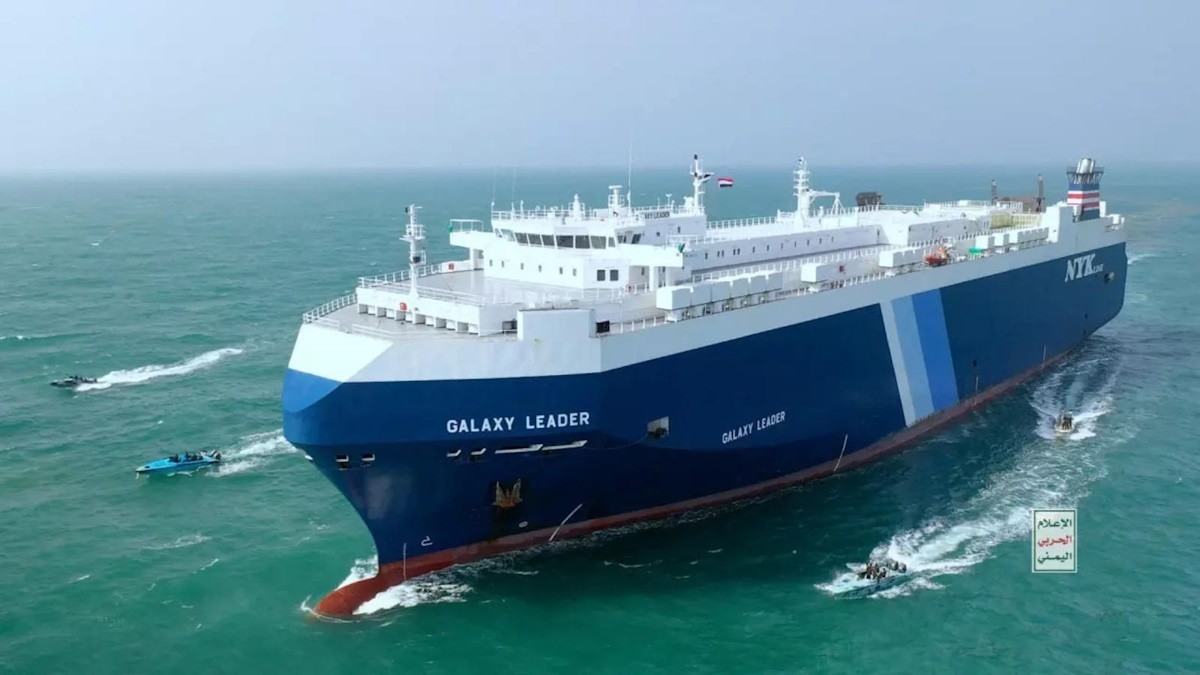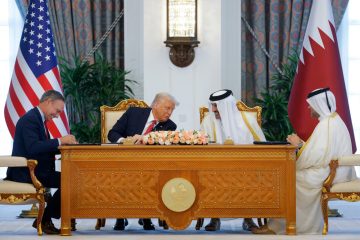The Middle East Crisis Is Starting to Weigh on the Economy

Europe’s economy is beginning to feel the pain from supply-chain disruptions caused by the crisis in the Middle East.
Data released on Wednesday showed businesses had to wait longer for parts to arrive in January after attacks by Yemen-based Houthi rebels on cargo ships in the Red Sea disrupted freight routes from Asia.
The attacks persuaded numerous freight carriers to take the safer but longer and more expensive journey around Africa via the Cape of Good Hope.
If the added costs pile up and persist, they could translate into fresh inflationary pressure in Europe, pushing back an expected cut in interest rates.
Surveys of purchasing managers at European manufacturers and service providers published Wednesday marked the first time respondents reported an increase in delivery times in more than a year.
While companies such as Tesla and Volvo had announced delays in production caused by the disruption, the surveys are the first evidence of a more widespread impact on European businesses.
A lengthening of supply times that began in 2020 contributed to the sharp pickup in global inflation rates that started in mid-2021, and economists and central bankers worry that the latest disruptions may have a similar, albeit much smaller, impact on prices.
Economists don’t expect the crisis to affect the U.S. as much because its trade isn’t as dependent on the Suez Canal as Europe’s and it has more alternative routes for goods coming from Asia.
According to the data firm S&P Global, a measure of supply times reported by eurozone businesses fell to 48.6 in January from 53.2 in December. A reading below 50.0 indicates that waiting times are getting longer. The U.K. was even more severely affected, with S&P Global’s measure falling to 43.1 from 51.3.
“Supply delays have spiked higher as shipping is rerouted around the Cape of Good Hope, the longer journey times lifting factory costs at a time of still-elevated price pressures,” said Chris Williamson, an economist at S&P Global Market Intelligence.
The current interruptions to supply chains are modest compared with the global-scale blockages seen in 2020 and 2021, and their economic impact is likely to be proportionately smaller.
However, the disruption has come at an important time in the global shipping calendar, when Chinese factories usually rush to ship goods to overseas customers ahead of their New Year closures.
“These two to three weeks are always a big shipping season,” said Ryan Petersen, chief executive of Flexport, a global logistics platform. “Factories in China shut down for one to four weeks, and buyers want to get everything out right before that.”
Freight costs have surged since the Houthi attacks intensified toward the end of 2023. According to the Freightos Baltic Index, the average cost of transporting goods in a container across the globe more than doubled between Dec. 22 and Jan. 19. On some routes linking China to Europe, the cost has risen more sharply.
If shipping costs stay high, that is likely to raise the price of many consumer goods. Economists at JPMorgan estimate that global goods prices could be raised by 0.7%, adding a third of a percentage point to the global inflation rate that excludes energy and food.
That core rate is the measure that central banks will be watching before concluding that it is safe to start cutting their key interest rates after two years of big increases. But while some price increases are very likely, few expect a repeat of the surge caused by the supply-chain blockages that built through 2020 and the following year.
“As time moves on, consumers will see prices passed on, but I don’t anticipate 2020,” said Ann Marie Jonkman, senior director of global industry strategies at Blue Yonder, a supply-chain-management company.
European businesses are more immediately vulnerable to shipping disruptions in the Red Sea because some 40% of trade with Asia usually takes that route. However, the longer time taken to go around the Cape of Good Hope reduces global shipping capacity, and will have some impact on U.S. businesses.
One complicating factor is that traffic through the Panama Canal, another big chokepoint in global trade, has been reduced because of a severe drought in Central America.
According to Petersen, that means that an increasing share of freight traffic between India and the East Coast of the U.S. will also have to go around the Cape of Good Hope, with access to both canals restricted.
“They’re definitely interacting,” he said. “They’re definitely impacting the east coast for Indian shipments.”









